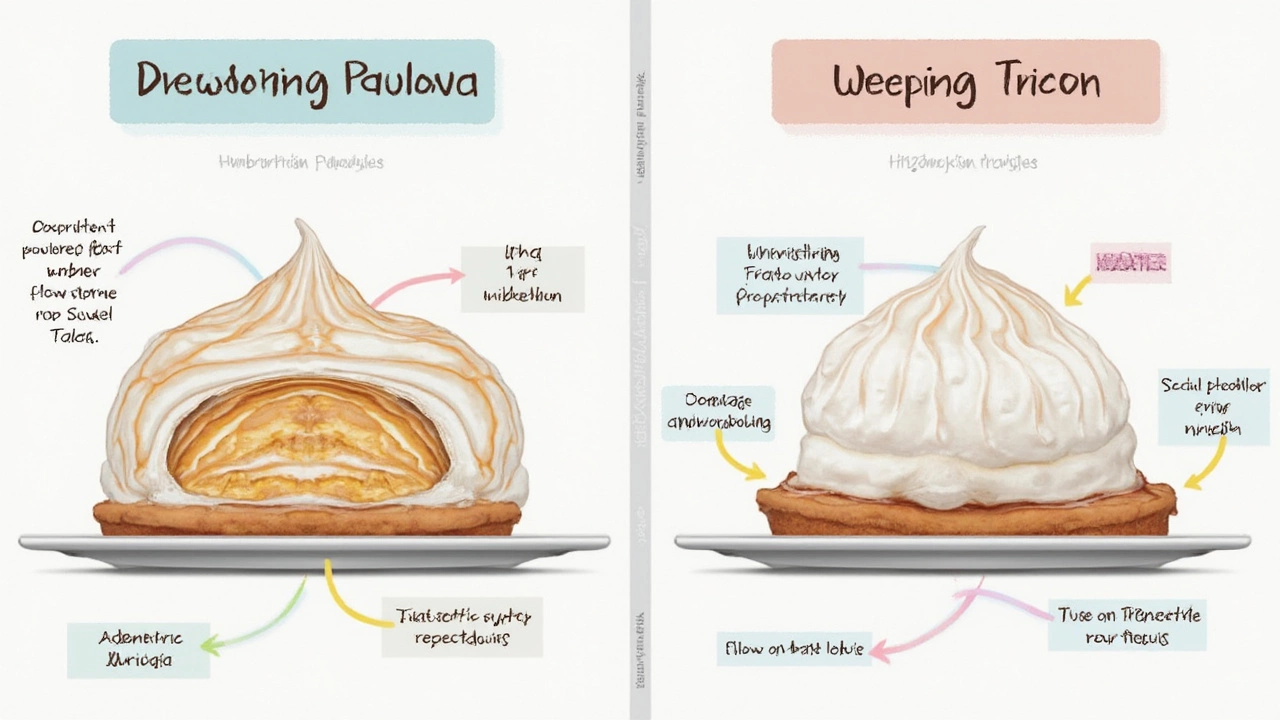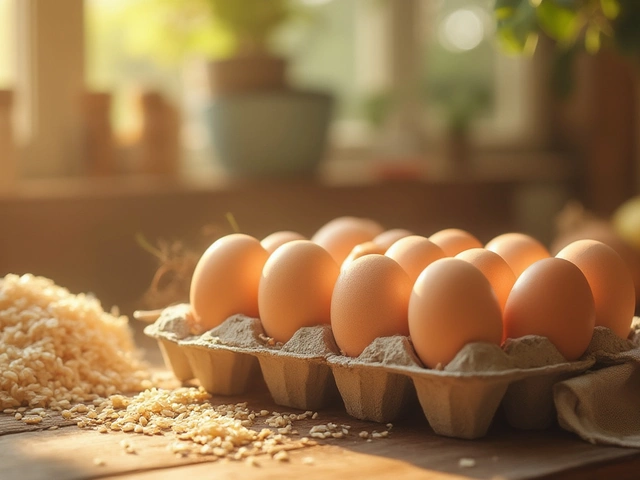
Ever pull a pavlova from the oven, admire its crisp shell, and by the time dessert rolls around, find yourself staring at a puddle of sugary syrup oozing from the base? It’s the sort of kitchen heartbreak that turns triumph into frustration. The truth is, a weeping pavlova—where a sticky liquid seeps out from the base or sides—can hit both pros and newbies. The good news: most pavlova woes come down to a few small baking missteps, each one surprisingly easy to fix or prevent with the right tricks.
Why Is My Pavlova Weeping? Breaking Down the Culprits
No one sets out to bake a drippy meringue, but even a little excess moisture in your pavlova can spell trouble. Understanding why this happens is half the battle. The main issue? Sugar and egg whites love each other, but if your ratio is off, or your mixture isn’t right, they're not going to play along. Here are the big troublemakers:
- Undissolved Sugar: Sugar needs to be totally dissolved in the egg whites during whisking. If you rush this step, sugar crystals melt out later as syrup. Always feel the mixture between your fingers. It should be silky, not gritty.
- Humidity: Summer storms or muggy kitchens mess with meringues. Sugar grabs moisture from the air, so baking on humid days or in steamy kitchens means you’re halfway to weep city before you even preheat the oven.
- Incorrect Baking Temperature: Hot ovens cause the sugar to melt and leak, while too low a temp keeps everything wet. The sweet spot is typically 110–120°C (230–250°F) for the drying phase after your initial bake.
- Overbeaten Egg Whites: Think stiff peaks, not dry, clumpy ones. If you whip too much, the proteins squeeze out water later, which escapes as liquid.
- Additions: Try adding cornstarch and a splash of vinegar or lemon juice. They stabilize the egg whites and slow sugar’s urge to separate.
- Cooling Too Fast: Rapid temperature drops make meringues shrink and sweat. Always cool in the oven—with the door ajar—before moving to the countertop.
Ever heard of a pavlova that wept so much, a famous chef had to serve it in bowls? True story from an Australian food magazine in 2012: humidity that day was 82%, and every meringue in the bakery turned syrupy, despite perfect recipes. The battle against weeping pavlova goes way back!

Steps to Stop Pavlova Weeping Before It Starts
So, you dream of a marshmallow-soft center and crackly shell—no soggy disasters. Here’s how to stack the odds in your favor, from the moment you grab your eggs.
- Choose the Right Day: If you can, bake when humidity is below 60%. Dry days are a meringue’s best friend. Avoid rainy afternoons unless you have a dehumidifier or a very dry oven.
- Separate Eggs Carefully: Even a speck of yolk will ruin the party. Cold eggs separate cleaner, so crack them straight from the fridge, then let the whites sit out until room temperature—they whip up fluffier that way.
- Measure Sugar (and Add It Slowly): The magic ratio is 1:2 by weight—50g sugar for every egg white. Add sugar one spoon at a time, beating well between each addition. Rushing this leads to undissolved sugar and weeping later.
- Test for Graininess: Once you think you’re done, rub a pinch of meringue between your fingers. If it’s gritty, keep mixing. Stand mixers help but don’t wander off—a few seconds extra can overbeat the whites.
- Stabilize Your Mix: Add a teaspoon of cornstarch and a teaspoon of vinegar (or lemon juice) right at the end. The acid strengthens the mix, making it less likely to fall apart or drip.
- Bake Slow and Low: Heat the oven to 150°C (300°F) for 10 minutes, put the pavlova in, then immediately reduce to 120°C (250°F). This sets the outer crust and dries out the center without browning or melting sugar.
- Cool Gradually: When baking is done, turn off the oven, wedge the door open with a wooden spoon, and let the pavlova cool slowly. Don’t move it to the counter until it’s fully cold—a fast temperature shift = weepy puddle.
One fun fact: food scientist Dr. Peter Barham tested more than 50 pavlova recipes and found that letting the meringue sit in the oven for up to 12 hours after baking creates the crispiest shell with the lowest chance of weeping. That’s patience, but worth it for special occasions.
If you’re the kind who likes numbers, check this out—the relationship between humidity, baking time, and weeping pavlova:
| Humidity (%) | Average Weeping Incidence (out of 10 pavlovas) | Suggested Oven Time (min) |
|---|---|---|
| 30 | 0 | 70 |
| 50 | 2 | 75 |
| 60 | 5 | 80 |
| 80 | 9 | 90 |
See? Even small increases in humidity mean a big mess. More oven time gives the pavlova a fighting chance.

Fixing a Pavlova That’s Already Weeping
So, your pavlova has already started leaking that sad, sugary syrup. Don’t panic: there are quick fixes and creative ways to save your dessert, even in the eleventh hour.
- Drain and Dry: If the syrup is pooling underneath, gently tilt the pavlova on a rack or paper towel to drain. A cool fan pointed nearby helps dry out the crust a little more.
- Double Down on Decoration: Whip extra cream and cover any problem spots. Top with plenty of berries or fruit—nobody will notice if there’s a bit of syrup underneath. A hidden weep is better than a ruined dessert.
- Chill Out: Refrigerate the pavlova for a couple of hours before serving. It won’t stop the weeping but will slow it down, especially if you haven’t added toppings yet.
- Split and Rebuild: If the base is very soggy but the top is crisp, slice off the shell and serve it layered with fruit and cream in glasses. You get all the flavor, just in a different shape—a mess that’s still delicious.
- Use as a Mix-in: Crumbled weeping pavlova is magic stirred into ice cream, folded into Eton mess, or used as a meringue crunch layer in trifles. Nobody will know it was ever soggy in the first place.
Don’t toss out a weeping pavlova too quickly. The syrup (technically called ‘weep’) is mostly dissolved sugar—sweet, yes, but safe to eat. As long as there’s no burning or raw egg, you can usually rescue the dessert with a little flexibility and creativity.
Next time, remember the main enemies: undissolved sugar, high humidity, and rough handling post-bake. The most important tip? If you want to guarantee a showstopper and finally stop asking how to fix pavlova disasters, be kind to your egg whites and play the long game both in mixing and cooling. The results are worth the wait, and once you nail it, people won’t stop asking for your recipe. Pretty sweet, right?





